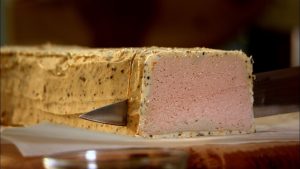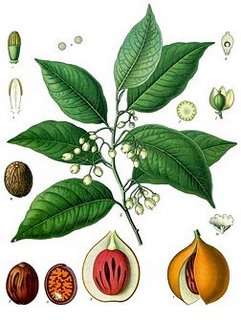Another one for the duh files.
 UK researchers found the fashion for serving chicken livers “rare” may expose people to potentially fatal Campylobacter food poisoning.
UK researchers found the fashion for serving chicken livers “rare” may expose people to potentially fatal Campylobacter food poisoning.
The study investigated the cooking times for chicken liver included in a number of popular current recipes.
Many of the recipes recommend serving chicken livers pink and cooking them for times insufficient to kill off Campylobacter – the most common cause of food poisoning in Britain which is responsible for more than 250,000 cases each year.
Researchers from Manchester, Bangor and Liverpool universities found that up to 52 per cent of 141 chefs from a range of professional kitchens questioned wanted to serve chicken livers so rare that they would not reach 70C, the temperature necessary to kill the pathogen Campylobacter.
Dr Paul Cross, of Bangor University, said: “Chicken livers are served in many pubs and restaurants around the country, and the trend seems to be for them to be served ‘pink.’
“The research asked over a thousand members of the public and the chefs about their preferences, and whether they could identify safely cooked meats.
“The public were not able to identify safely cooked chicken livers by sight.
“Almost a third of the public participants identified livers as ‘safe’ which in fact had predicted Campylobacter survival rates of between 48 per cent and 98 per cent.”
Study co lead author Professor Dan Rigby of Manchester University, said: “As people are eating their steaks and other joints of red meat rarer, that trend seems to be extending to higher risk meats such as chicken livers and beef burgers.
“We found that many chefs were able to identify cooked livers that reached the temperature necessary to kill the pathogens, but their preferences for the taste and texture of pink livers may be overriding their knowledge of food safety.
“In contrast the public were consistent in their choices – they tended to select dishes to eat that they thought met safe cooking guidelines. This is a concern, because the public were also poor at identifying by sight whether a cooked chicken liver had been cooked sufficiently to be safe.”
The study showed that chefs also overestimated the public’s preference for rareness.
The study highlighted that almost half the members of the public questioned (48 per cent) agreed that cooking programmes on TV and recipes in magazines had influenced the public to serve meat pinker in the middle.
Of course the British public believes thia, because their regulators won’t say, use a damn thermometer.



.jpeg) asparagus baron of Ontario
asparagus baron of Ontario.jpg)
.jpg) brown and an instant-read thermometer inserted into the meaty part of the thigh reads 155 to 165 degrees.”
brown and an instant-read thermometer inserted into the meaty part of the thigh reads 155 to 165 degrees.” Yesterday, she started screaming as loud as she could for about 20 seconds. Sure enough, out popped a poop. That was about the fourth consecutive time it’s happened. Really, who hasn’t wanted to scream during a plugged up poop.
Yesterday, she started screaming as loud as she could for about 20 seconds. Sure enough, out popped a poop. That was about the fourth consecutive time it’s happened. Really, who hasn’t wanted to scream during a plugged up poop. Matmagasinet’s chief editor Ulla Cocke
Matmagasinet’s chief editor Ulla Cocke